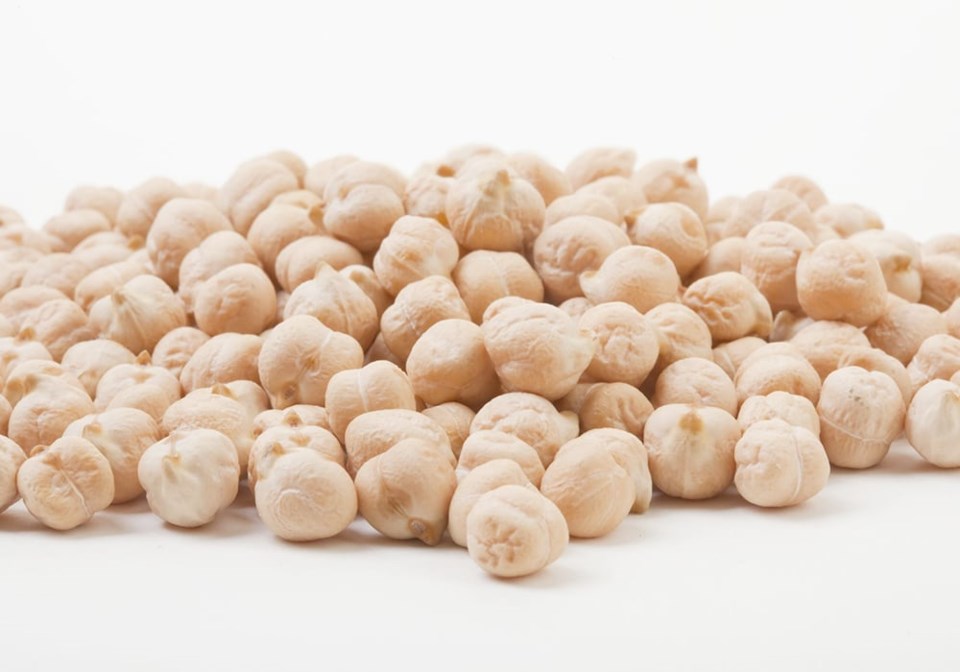WESTERN PRODUCER — Canada will face stiff competition from Russia in kabuli chickpea markets in 2023-24, according to a panel of experts.
Russian growers are expected to harvest 501,000 tonnes of the crop, up from 434,000 tonnes last year and 324,000 tonnes two years ago.
Russia grows small-calibre chickpeas that compete with Canadian product in overseas markets.
“With Russia having a big crop, I think it’s directly affecting the Canadian prices,” Navneet Singh Chhabra of Global Garbanzo said during a May 30 presentation at the Global Pulse Confederation’s Pulses 23 convention.
Russia accounts for about one-quarter of total global supply of the crop from the world’s major origins, so it is a very large player. Canada is expected to produce 256,000 tonnes of chickpeas by comparison.
Deepak Rawat, a trader with Empros International, said there are a couple of reasons why Russia’s kabuli production is steadily rising.
The Russian government collects an export duty on major crops like wheat, corn and barley. Kabuli chickpeas and yellow peas are exempt from the duty.
“Farmers know government intervention is not going to hamper the trade,” he told delegates attending the GPC convention.
The other reason is that Russian kabuli prices are around US$800 per tonne, up from the usual level of $500 to $600 per tonne, so farmers are making better profits growing the crop.
“These are the incentives for farmers to increase the production in Russia,” said Rawat.
Andac Kolukisa, a trader with Natural Gida, said Russia produces six- or seven-millimetre chickpeas, which are the cheapest kabulis in the world. Turkey imports Russian product and then re-exports it for food aid packages to markets like Iraq and Afghanistan.
“There is a big need for it,” he said.
Singh Chhabra is forecasting 245,000 tonnes of Turkish production, a 25 percent increase over last year. Some traders think it could be as high as 350,000 tonnes.
India is the other big player. It is expected to produce 350,000 tonnes of kabulis, a 21 percent increase over last year despite the third consecutive year of reduced yields.
Exports are forecast at 100,000 tonnes, the same level as 2022-23.
Neeraj Dhawan, a trader with Mega Grain, thinks that number is low. He is forecasting 140,000 tonnes of exports from India, with 125,000 tonnes of that being large-calibre product.
Singh Chhabra is forecasting 1.93 million tonnes of total kabuli chickpea supply in 2023-24 from the major origins, a seven percent increase over last year.
Large calibre kabuli supplies are forecast to be tight due to a poor crop in Mexico and a shift to smaller calibre chickpeas in the United States.
Pakistan is the big player on the demand side, accounting for 20 to 25 percent of global trade. The country purchased 227,000 tonnes of the crop in 2022, down from 273,000 in 2021 and 383,000 tonnes in 2020.
The drop was in Russian kabulis, which are often consumed as a substitute for desi chickpeas in that market. Singh Chhabra said banks in Pakistan are refusing to process Russian documents.
Anas Maniya, a trader with Midtrans Foods, said lack of access to U.S. dollars is the “talk of the town” in Pakistan.
But that is not an issue for the pulse trade because Pakistan’s central bank has declared pulses an essential commodity, making it binding on commercial banks to provide U.S. dollars to all pulse importers.
“This is nothing to be worried about,” he said.
But what is a concern is the affordability of the commodity. Kabuli prices have been on the rise since 2021 and Pakistan’s rupee has devalued by 70 percent over the last year.
“The consumption has gone down by approximately 20 percent,” said Maniya.
Consumers are also opting for cheaper small-calibre chickpeas, which now account for about 65 percent of sales.
Algeria is another important market, importing 65,000 tonnes of the commodity in 2022, mainly from Mexico and India.
The Algerian government recently implemented a new policy that only allows for imports through government tenders, shutting out the private trade. Imported volumes through the tenders have been insufficient, which is leading to rising prices in that market.
Singh Chhabra said in summary, historically high prices are eroding demand in key import markets, while global supply of the crop is on the rise.
Another bearish factor on the demand side is Pakistan’s political instability and currency devaluation.
On the bullish side, there are yield concerns developing in some supply origins and carry-in stocks are negligible in all the major export markets.
“So, any harvest concern in any origin will affect price,” he said.
Contact [email protected]

